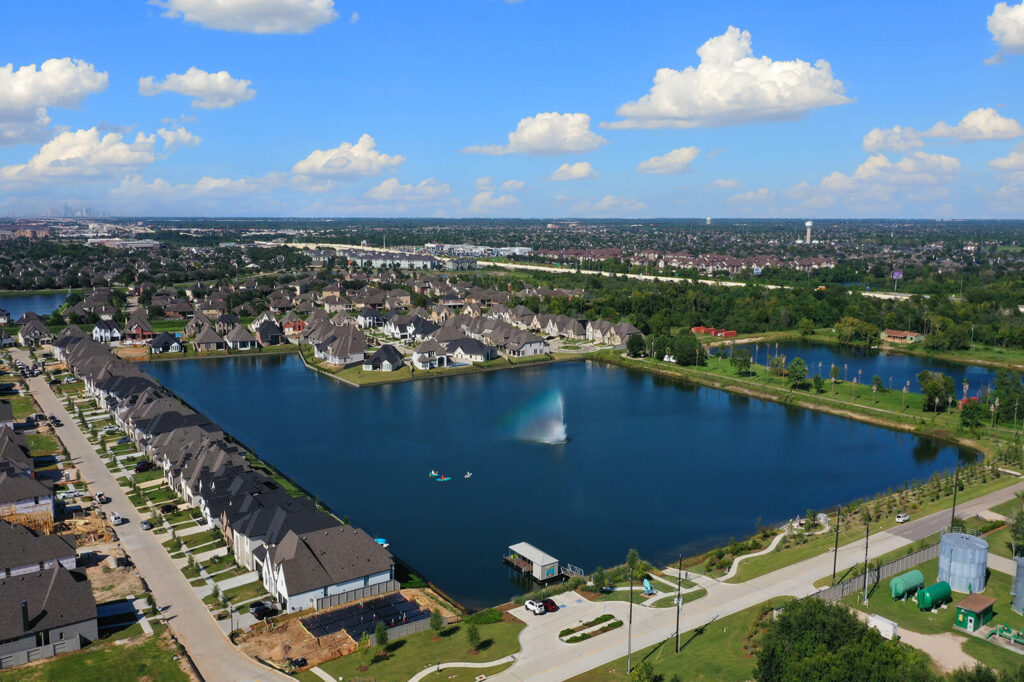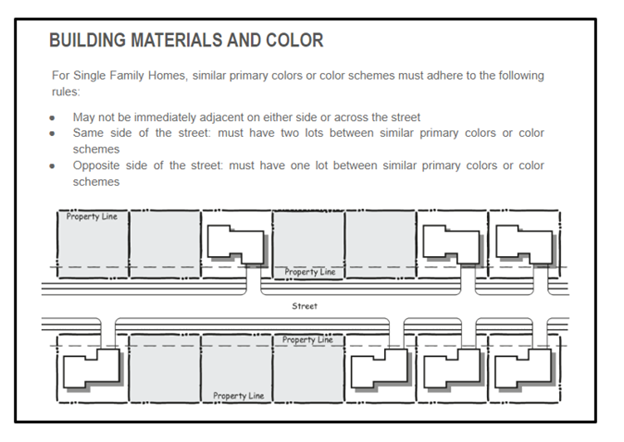What are Design Guidelines?
Design Guidelines are documents that do just that: provide design direction or “guidelines” to the homebuilder partners who are building in a master-planned community. They outline the rules for architectural details such as roof pitches, window configurations, exterior materials, fencing, and even landscaping materials and tree sizes. Having clear, concise Design Guidelines ensures the community’s appearance is in keeping with the developer’s vision, and that the vision is carried out over years and sometimes decades.

Why are Design Guidelines important?
Master-planned communities start with a vision. That vision comes to life through careful planning, capital investment, and hard work. Developers have a vested interest to ensure every detail is aesthetically pleasing and appealing to potential homebuyers. A Design Guidelines document provides the framework to ensure each and every street has “curb appeal,” which aids in sales velocity. The more homes sold, the more lots a homebuilder will purchase! At the end of the day, investing in Design Guidelines can have a huge positive impact on the community’s business plan.
Key Components of Effective Design Guidelines
Contents for an effective Design Guidelines document should include:
- The Developer’s Vision and Community Brand
- The Review Process: how the builder will submit elevations and floorplans, timelines, review fees
- Site Standards for the lot
- Home Construction Standards for the home design
- Landscape Standards, including materials, typical landscape plans and fencing requirements
- Illustrations that ensure clarity in the field
Here is an example of an illustration that provides clarity regarding “monotony rules” for color schemes along a streetscape:

When should the developer provide Design Guidelines?
If a developer has multiple builders in a community, providing Design Guidelines are a critical tool to ensure consistency. The developer typically provides them to the builder(s) at or near completion of a lot sales contract. Builders will want to have those Guidelines in-hand to select existing new home product and/or develop new elevations and floorplans that align with the developer’s vision.
Tips for developing effective Design Guidelines:
- Start early! As soon as the community vision has been established, think about the implications for new home designs. Remember to consider landscaping as well. Crafting effective Design Guidelines from scratch takes time; generally allow for 6-8 months.
- Thoroughly research and understand municipal requirements that may impact your vision. For example, your town or county may have setback requirements from the street or rear yard that will affect product design.
- Get experienced help in crafting your Design Guidelines. It will save you time and money in the long run. APR can create Design Guidelines or assist you editing existing guidelines to ensure they are clear and easily implemented.
- Involve multiple stakeholders in the draft. If you have existing relationships with builders, it’s a good idea to involve them in the initial review. That way you can identify any sticking points before the Guidelines are implemented.
Design Guidelines provide the framework for successful community execution over the life of a project. They can lead to increased sales velocity and ensure the community’s value over the life of the project. If you’re going to count on home builders to ensure the vision of the community comes to life, effective Design Guidelines are critical!